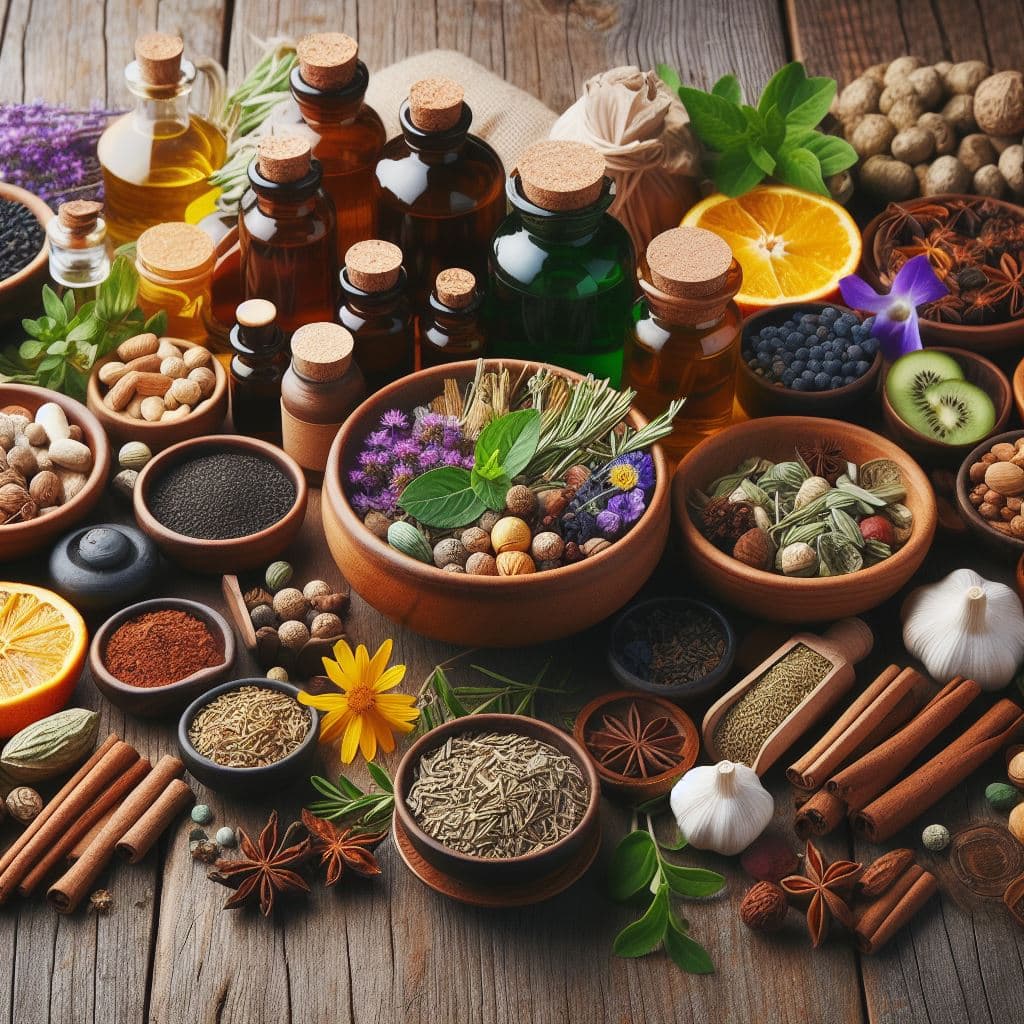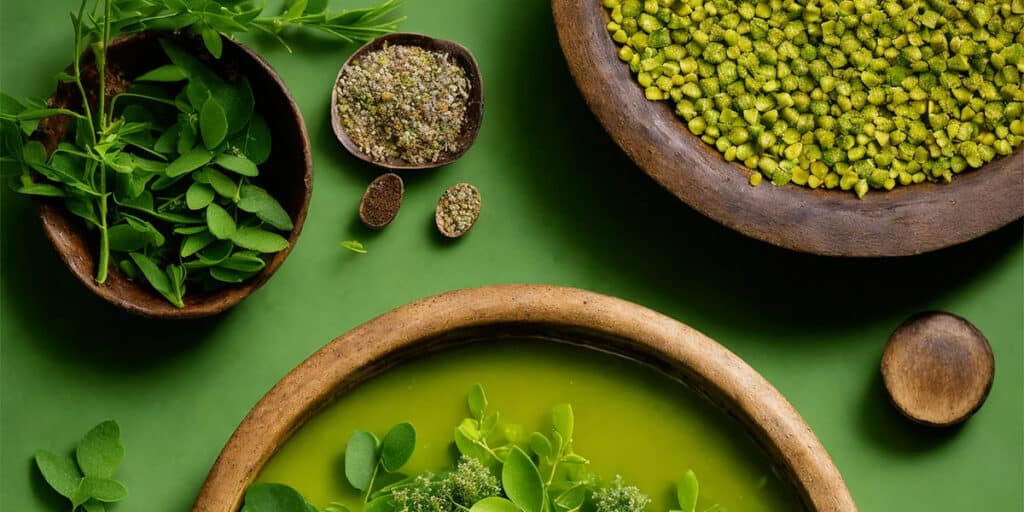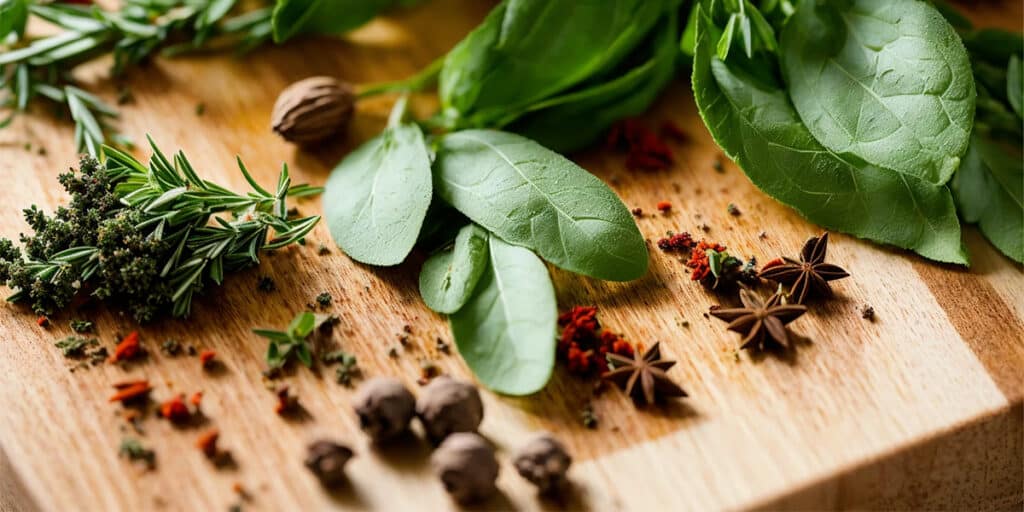In the quest to manage diabetes, a condition affecting millions globally, we often overlook nature’s pharmacy—herbal plants. These natural wonders, steeped in ancient wisdom, are increasingly recognized by modern science for their potential in controlling blood sugar levels.
This guide delves into the world of herbal remedies, exploring their role in diabetes management. It’s not just about treating a condition; it’s about embracing a holistic approach to health.
Understanding Herbal Intervention in Diabetes Management
At the core of herbal therapy for diabetes is the principle of aiding the body’s ability to regulate blood sugar levels. Fascinatingly, many plants contain compounds that mimic insulin or enhance its effectiveness. For instance, a study published in the “Journal of Ethnopharmacology” highlighted the insulin-like effects of compounds found in certain herbs. These natural substances offer a gentler approach compared to synthetic medications, often with fewer side effects.
Herbal remedies for diabetes aren’t just about lowering blood sugar; they encompass a broader spectrum of health benefits. A noteworthy example is the antioxidant properties of many medicinal plants, which combat oxidative stress—a key factor in diabetic complications. Research in “Phytotherapy Research” has shown how these antioxidants can protect against cellular damage.
Improved Insulin Sensitivity: Some herbs, like Fenugreek, contain compounds that enhance insulin sensitivity, making it easier for your body to regulate blood sugar levels. A study in the “Journal of Medicinal Food” demonstrated significant improvements in insulin sensitivity with fenugreek supplementation.
Reduced Blood Sugar Spikes: Cinnamon, known for its aromatic flavor, also plays a role in moderating post-meal blood sugar spikes. Research in “Diabetes Care” found that cinnamon could reduce fasting blood glucose levels by up to 30%.
Enhanced Pancreatic Function: Certain herbs, such as Gymnema Sylvestre, are known to support pancreatic health, potentially aiding in natural insulin production. A study published in the “Journal of Ethnopharmacology” highlighted its role in regenerating pancreatic cells.
Stress Reduction: Chronic stress is a known contributor to blood sugar imbalances. Adaptogenic herbs like Ashwagandha help in mitigating stress, thus indirectly supporting blood sugar control, as evidenced by research in “Indian Journal of Psychological Medicine”.
Weight Management: Weight control is crucial in managing diabetes. Herbs like Garcinia Cambogia, as shown in the “Journal of Obesity”, can aid in weight loss, which is often beneficial for people with type 2 diabetes.
Improved Lipid Profile: Many diabetic patients struggle with high cholesterol levels. Herbs like Guggul have been shown in studies like the one in “Phytomedicine” to improve lipid profiles, reducing the risk of cardiovascular diseases.
| Herb | Study Findings | Specific Benefits |
|---|---|---|
| Cinnamon | Reduces fasting blood glucose levels by up to 30% (Diabetes Care) | Lower blood sugar levels, improved insulin sensitivity |
| Fenugreek | Significant improvements in insulin sensitivity (Journal of Medicinal Food) | Enhanced insulin sensitivity, slow digestion for gradual glucose release |
| Gymnema Sylvestre | Contributes to pancreatic cell regeneration (Journal of Ethnopharmacology) | Supports pancreatic health, reduces sugar cravings |
| Ashwagandha | Effective in stress reduction (Indian Journal of Psychological Medicine) | Reduces stress, indirectly supports blood sugar control |
| Garcinia Cambogia | Aids in weight loss (Journal of Obesity) | Supports weight management, may reduce insulin resistance |
| Guggul | Improves lipid profiles (Phytomedicine) | Improves cholesterol levels, reduces cardiovascular risk |
The Synergistic Effects of Herbal Combinations
The synergistic effects of herbal combinations represent a cornerstone principle in herbal medicine, reflecting the idea that certain herbs, when used together, can enhance each other’s effectiveness beyond what they could achieve individually. This synergy not only amplifies the desired therapeutic outcomes but can also increase the spectrum of benefits, reduce potential side effects, and target multiple health concerns simultaneously. Understanding and harnessing these synergistic relationships between herbs allows for a more nuanced, personalized approach to natural healing and wellness.
The Basis of Herbal Synergy
Synergy in herbal combinations is rooted in the complex interplay of phytochemicals— the natural compounds found in plants. These compounds can interact in various ways to enhance absorption, improve bioavailability, and influence metabolic pathways, ultimately leading to enhanced therapeutic effects. The concept of synergy goes beyond mere addition, embodying the idea that the whole is greater than the sum of its parts.
Mechanisms of Synergistic Action
- Enhanced Absorption: Some herbal combinations can increase the bioavailability of key compounds. For example, piperine in black pepper enhances the absorption of curcumin in turmeric, making the anti-inflammatory effects of curcumin more potent.
- Complementary Actions: Herbs with different but complementary actions can address multiple aspects of a condition. Combining an anti-inflammatory herb with an analgesic (pain-relieving) herb can provide comprehensive relief for conditions like arthritis.
- Modulation of Metabolic Pathways: Certain combinations can influence metabolic pathways to enhance therapeutic outcomes, such as using herbs that support liver function alongside those that combat inflammation to ensure effective detoxification and anti-inflammatory responses.
- Reduction of Side Effects: Some herbs can mitigate the potential side effects of others, enabling the use of potent therapeutic agents with reduced risk. For example, combining a powerful medicinal herb with a gentle, soothing herb can minimize irritation or discomfort.
Examples of Synergistic Herbal Combinations
- Ginger and Turmeric: Both renowned for their anti-inflammatory properties, when combined, they offer a powerful remedy for inflammation-related conditions, including digestive issues and joint pain.
- Milk Thistle and Dandelion: This pairing supports liver health, with milk thistle providing hepatoprotective effects and dandelion aiding in bile flow, together enhancing detoxification and liver function.
- Echinacea and Astragalus: Used together, these herbs can significantly bolster the immune system. Echinacea stimulates immediate immune response, while astragalus works to build long-term immune resilience.
- Lavender and Chamomile: Both are known for their calming effects. When used together, they provide a potent remedy for anxiety, stress, and sleep disturbances, offering a multi-faceted approach to relaxation and mental well-being.
Formulating Herbal Combinations
Creating effective herbal combinations requires a deep understanding of each herb’s properties, including its active constituents, traditional uses, and scientific research supporting its efficacy. It also necessitates knowledge of herbal pharmacology and potential interactions with medications or other herbs. Practitioners often rely on both traditional knowledge passed down through generations and contemporary scientific research to craft these combinations.
Considerations and Cautions
While the synergistic effects of herbal combinations can offer enhanced benefits, it’s crucial to approach them with care, particularly for individuals with specific health conditions, those pregnant or breastfeeding, and those on medication. Consulting with a healthcare professional or a qualified herbalist is advisable to ensure safety and efficacy.
Herbal Plants to Control Diabetes: Your FAQs Answered
What is the best way to incorporate these herbs into my diet?
The best way to incorporate these herbs into your diet is by adding them to your meals or consuming them as supplements. For example, cinnamon can be sprinkled on oatmeal or yogurt, fenugreek seeds can be added to curries, and herbal teas can be made from Gymnema Sylvestre or Ashwagandha. However, it’s important to consult with a healthcare provider for appropriate dosages and to ensure they fit into your overall diabetes management plan.
Are there any side effects of using these herbal remedies?
While herbal remedies are generally safe, they can have side effects or interact with other medications. For instance, high doses of cinnamon can be harmful to the liver, and fenugreek may cause gastrointestinal upset. Always consult a healthcare professional before starting any new herbal supplement, especially if you are taking other medications.
How long does it take to see the effects of these herbal treatments?
The time it takes to see the effects of herbal treatments can vary depending on the individual and the specific herb. Some people may notice improvements in their blood sugar levels within a few weeks, while for others, it may take longer. Consistency and adherence to a broader diabetes management plan are key factors in seeing results.
Can I use these herbs alongside my conventional diabetes medication?
Many herbal remedies can be used alongside conventional diabetes medications, but it’s crucial to consult with your healthcare provider first. Some herbs can interact with medications, potentially affecting their efficacy or causing adverse effects.
Are these herbal remedies suitable for all types of diabetes?
While many herbal remedies can be beneficial for both type 1 and type 2 diabetes, their effects may vary depending on the type of diabetes and individual health conditions. It’s important to discuss with a healthcare provider to determine which herbs might be most beneficial for your specific type of diabetes.
How do diet and lifestyle changes complement these herbal treatments?
Diet and lifestyle changes are foundational in managing diabetes. A balanced diet, regular physical activity, and stress management enhance the effectiveness of herbal treatments. For example, incorporating a diet low in processed sugars and high in fiber can complement the blood sugar-lowering effects of herbs like fenugreek and cinnamon.
Can these herbs cure diabetes completely?
While these herbs can significantly aid in managing diabetes, they should not be considered a cure. Diabetes management typically involves a combination of diet, lifestyle changes, medication, and, where beneficial, herbal supplements. Ongoing monitoring and adjustment of treatment strategies are essential.
Are there any specific herbs that are particularly effective for type 1 diabetes?
While most herbal remedies discussed are more commonly used for type 2 diabetes, some, like Gymnema Sylvestre, have shown potential benefits for type 1 diabetes by possibly helping to regenerate pancreatic cells. However, more research is needed, and it’s crucial to consult with a healthcare provider for tailored advice.
How does stress affect blood sugar levels, and how can herbal remedies help?
Stress can increase blood sugar levels by triggering the release of stress hormones like cortisol. Adaptogenic herbs like Ashwagandha can help manage stress, thereby indirectly helping to control blood sugar levels. These herbs work by modulating the stress response in the body.
Where can I source these herbs, and what should I look for to ensure quality?
These herbs can be sourced from health food stores, online retailers, or local herbalists. Look for products that are certified organic, non-GMO, and have no added fillers or preservatives. It’s also beneficial to choose brands that provide transparent information about the sourcing and processing of their herbs.
Citations
- “Insulin-like Biological Activity of Culinary and Medicinal Plant Aqueous Extracts in vitro,” Journal of Ethnopharmacology.
- “Cinnamon Improves Glucose and Lipids of People With Type 2 Diabetes,” Diabetes Care.
- “A Prospective, Randomized, Double-Blind, Placebo-Controlled Study of Ashwagandha’s Effects on Stress Reduction,” Indian Journal of Psychological Medicine.
- “Guggul for Hyperlipidemia: A Review,” Phytomedicine.








